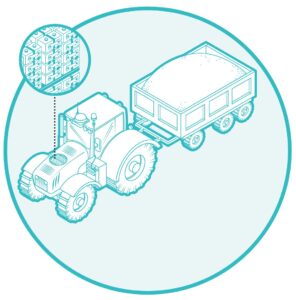By now, most everyone has heard of cryptocurrency or at the very least Bitcoin, a specific type of cryptocurrency. If you have been unfortunate enough to experience ransomware, you know that cryptocurrency is the form of payment that is usually required. If you have ever wondered what Bitcoins are and how cryptocurrency works, hang in there with me while I attempt to explain without diving into the crunchy technical details.
Cryptocurrency seems to have a negative connotation associated with it because it tends to be the form of payment widely used for the black market, ransomware and may other illegal activities. However, although this form of currency is appealing to criminals, it also has many advantages over paper currency. So, what is cryptocurrency?
Cryptocurrency is a form of digital money created from code. Unlike our U.S. dollars and cents, there is no physical form of cryptocurrency. You cannot hold it in your hand. More importantly, it is a decentralized transaction system unlike our traditional centralized transaction system used by banks. Any payment network is made up of accounts, balances and transactions.
To prevent what is called double spending, your bank (the central transaction system) is the authority on validating what transactions are made on your account that affect your balance. This is not the case in the decentralized system used by cryptocurrency.
Cryptocurrency uses a peer system made up of computers all over the world. Every peer in the network needs to have a list of all transactions to validate future transactions. If the peers disagree even with one transaction, everything is broken. To achieve consensus without a central authority, a man by the name of Satoshi Nakamoto devised a system that uses a network of nodes (computers) that validate the transactions and the users making the transaction by using cryptographic algorithms.
To my knowledge, the system used for cryptocurrency has held its integrity and has not been compromised. This is mainly due to the blockchain process, which makes a new transaction record with the nodes permanent and unalterable, along with the strong encryption techniques used for authentication. Once a transaction is confirmed, it is there permanently and cannot be reversed. So how are transactions confirmed, you might ask.
You may have heard the term cryptomining or bitcoin mining. This is a process by which a person sets up a computer to be used for mining cryptocurrency. A mining node is what confirms the transactions that take place. Once a transaction is confirmed by a miner, all nodes must add that transaction to its database and it has become a permanent part of the blockchain. Miners then get rewarded with a token of the cryptocurrency, this could be bitcoin. Now you understand how people make money by crypto mining and why it is an important part of the system.
Cryptocurrency is fast and available worldwide. Transactions propagate within minutes across the network from anywhere in the world. As far as electronic payments go, it is probably the only pseudonymous payment available, which is why it is appealing to criminals. It is irreversible. Once a transaction has taken place and is confirmed, it is there to stay, and no one, I mean NO ONE, can change it. Cryptocurrency is secure to say the least. It is controlled by a public key cryptographic system by which only the owner of the private key can send the currency. It is basically impossible to hack the system.
Hopefully I have answered more questions about cryptocurrency than I have created and you have a little better understanding of what it is and how it works. I’ll let you decide if it might be the next revolutionary currency of the future.








